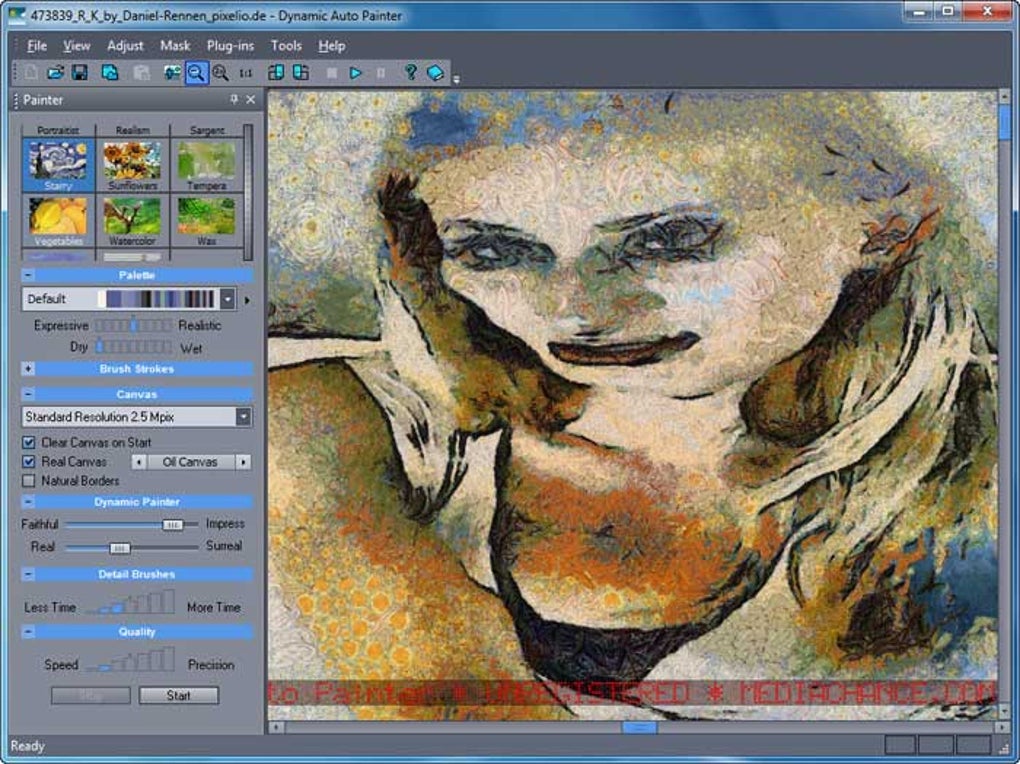

The results were surprisingly good–it really looked like a painting, even when I zoomed in on the 6-megapixel output image (the default output setting–Dynamic Auto-Painter can output images as large as 16 megapixels). You decide when to stop once you get the look you were after (sometime fewer brush strokes make for a more expressive painting).įor my first test, I picked the Aquarel preset and changed almost none of the settings. One big difference is the continuous mode, in which Dynamic Auto-Painter continues rendering endlessly. Using Dynamic Auto-Painter is a similar experience, only it “renders” a hand-drawn painting instead of a 3D-looking polished image. If you’ve ever used a 3D design program such as Carrara, you’ve probably had to wait for a render to finish. Producing an image can take anywhere from a few minutes to an hour. It was an eerie experience, almost like watching an invisible artist painting my photo in fast-forward. Imagine my surprise when my photo was removed from the canvas, and individual brush strokes began to appear one by one, rapidly building up the image from scratch. In other words, I had fairly low expectations. When I first tried the program, I figured my processor was going to crunch some numbers and come up with a somewhat-transformed version of my photo that is supposed to resemble a painting. The process itself is fascinating to watch. Now hit Start and watch your photo transform into a painting. The workflow is simple: Drop a photo into the app, pick the preset you like, and dial in your settings: How expressive or realistic you want the output to be, how dry or wet, what should be the brush sizes used, how faithful or impressionistic the output should be, etc. The application ships with over twenty different painting presets, ranging from Aquarel to Chalk to Monet to “Wet-on-wet” paintings with subtle color gradients.


 0 kommentar(er)
0 kommentar(er)
